Improving Learning Outcomes for Your Busy Students
Toward the latter half of my son’s junior year in high school (he’s a junior in college now), I went with him to the meetings set up by the...
AP & Honors Mathematics
Explore Wiley titles to support both AP and Honors mathematics instruction.
Literacy Skills & Intensive Reading
Connections: Reading – Grades 6–12
Empower student success with a proven intensive reading program that develops strong reading skills in striving readers.
Drama, Speech & Debate
Basic Drama Projects 10th Edition
Build students’ confidence and competence with comprehensive, project-based theatre instruction.
Literature
Connections: Literature
Support learners as they study dynamic, relevant texts and bring the richness of diverse voices to students through literature.
Literature & Thought
Develop critical thinking, reading, and writing across literacy themes, genres, historical eras, and current events.
Language Arts
Vocabu-Lit® – Grades 6–12
Help students build word power using high-quality contemporary and classic literature, nonfiction, essays, and more.
Connections: Writing & Language
Help students develop grammar, usage, mechanics, vocabulary, spelling, and writing and editing skills.
Reading/English Language Arts
Measuring Up to the English Language Arts Standards
Incorporate standards-driven teaching strategies to complement your ELA curriculum.
English Language Learners
Measuring Up for English Language Learners
Incorporate research-based best practices for ELLs with an approach that includes a focus on language acquisition strategies.
Mathematics
Measuring Up to the Mathematics Standards
Incorporate standards-driven teaching strategies to complement your mathematics curriculum.
Foundations
Measuring Up Foundations
Help students master foundational math skills that are critical for students to find academic success.
Science
Measuring Up to the Next Generation Science Standards
Give students comprehensive NGSS coverage while targeting instruction and providing rigorous standards practice.
Assessment
Measuring Up Live
Deliver innovative assessment and practice technology designed to offer data-driven instructional support.
For a better website experience, please confirm you are in:
2 min read
 Stephanie Nugent
Mar 24, 2022 9:57:26 AM
Stephanie Nugent
Mar 24, 2022 9:57:26 AM

One of the key shifts in English Language Arts classrooms is the move for students to engage routinely with complex text. To prepare students for the demands after high school, state standards across the United States all contain language that requires students to be able to read and comprehend texts at increasingly complex levels (NGA Center and CCSSO). In their effort to provide students the skills necessary to navigate these texts, close reading is a strategy ELA teachers employ in their classrooms. According to Douglas Fisher and Nancy Frey, “Close reading is an instructional routine in which students are guided in their understanding of complex texts” (1). The routine includes multiple readings of the text or part of the text, annotation of the text, and text-dependent writing and/or discussion prompts aimed at deepening students’ comprehension of the text.
The close reading routine asks students to read a text, or part of a text, multiple times, digging deeper each time. The chart below details the close reading process for students.
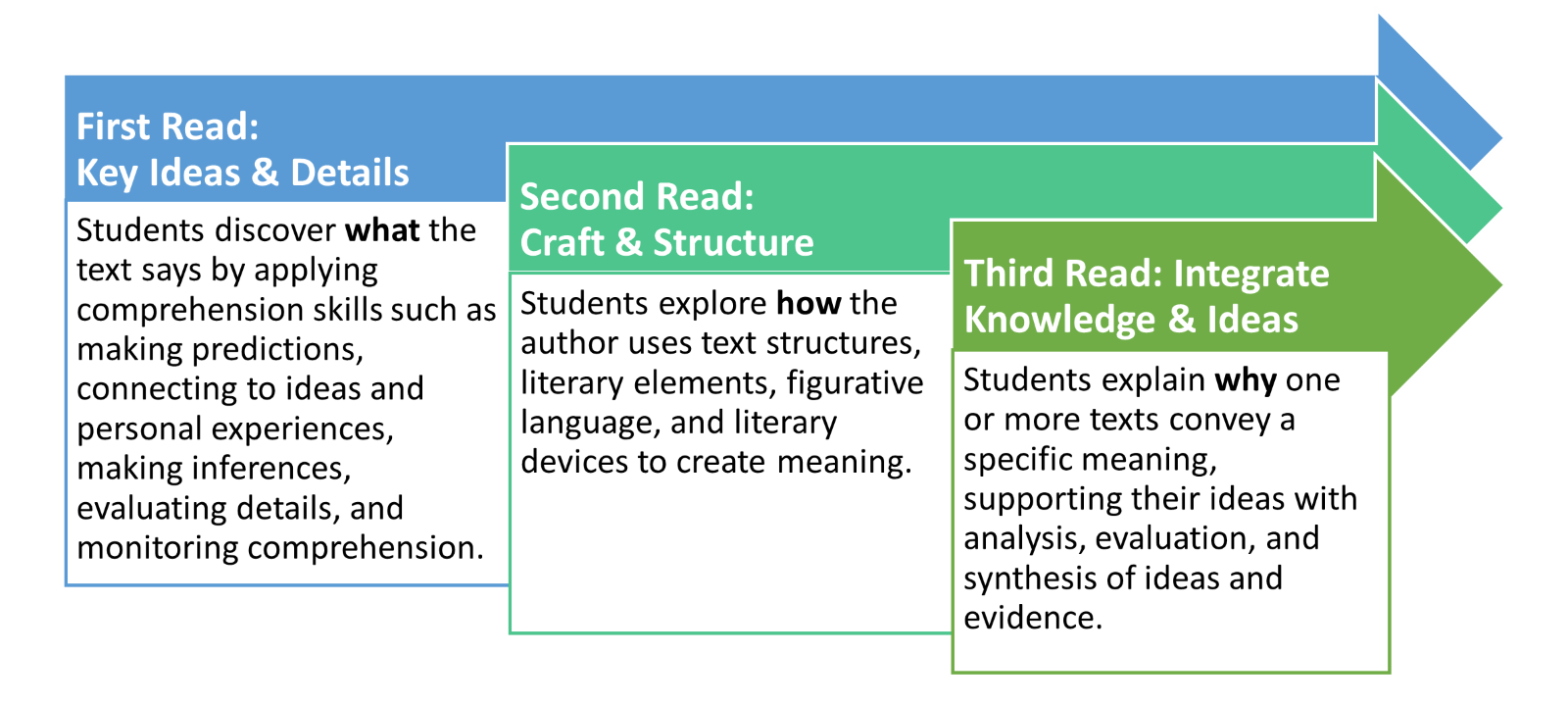
The close reading routine can look daunting to both teachers and students. In fact, when I worked with my students, and later, when I coached teachers around the close reading strategy, I often encountered push back around the repeat readings. And while there is a wealth of research that suggests close reading improves reading comprehension by providing a structure with which to critically read complex texts, some students, and teachers alike, struggle with reading fatigue. So, what do we do?
The key here is to remember that multiple readings does not mean students must read independently every time. When first introducing younger students to the close reading strategy, teachers often read aloud. Subsequent readings of a text may be read together in a small group or pairs as students collaboratively discuss the text. However, we must remember that older students also benefit from listening to texts read aloud. According to the Center for Teaching, when listening to a text, “…students benefit from hearing complete ideas, expressed with originality and attention, such as one finds in literary language.” One easy way to provide these benefits is to incorporate the use of Immersive Reader into the close reading routine.
Immersive Reader is a technological tool that allows students, among other things, to listen to a text read to them. Directing students to use Immersive Reader during the first read is a way to break up the monotony students may feel when asked to read a text multiple times. Furthermore, allowing students to listen to a text the first time they encounter it may have additional benefits. Fisher and Frey note that “decades of research…confirm that listening comprehension outpaces reading comprehension from early childhood through at least middle school.” In other words, a student’s comprehension level can often exceed her reading level. Listening to the text, then, provides further opportunity for comprehension while students dig into the written text.
See why Immersive Reader is a game-changer for your classroom in this demo and learn more about our approach to differentiated learning!
Fisher, Douglas, and Nancy Frey. “Speaking and Listening in Content Area Learning.” Reading Rockets, WETA, 16 July 2020, https://www.readingrockets.org/article/speaking-and-listening-content-area-learning.
Fisher, Douglas, et al. Text-Dependent Questions, Grades 6-12: Pathways to Close and Critical Reading, Corwin, Thousand Oaks, CA, CA, 2015.
National Governors Association Center for Best Practices, and Council of Chief State School Officers. “Key Shifts in English Language Arts.” Common Core State Standards Initiative, National Governors Association Center for Best Practices, Council of Chief State School Officers, 2010, http://www.corestandards.org/other-resources/key-shifts-in-english-language-arts/.
Stephanie Nugent taught high school English for 11 years in both Colorado and Iowa before serving an addition five years as a member of a high school administrative team. Despite moving out of the school system to work with Perfection Learning, Nugent still considers herself a passionate educator who believes that education is a human right and is necessary for social justice to prevail. Nugent graduated from the University of Northern Iowa with a B.A. in English Education (2003), Drake University with a M.S. in Educational Leadership (2011), and Concordia University-Portland with a M.Ed. in Curriculum and Instruction (2014).

Toward the latter half of my son’s junior year in high school (he’s a junior in college now), I went with him to the meetings set up by the...
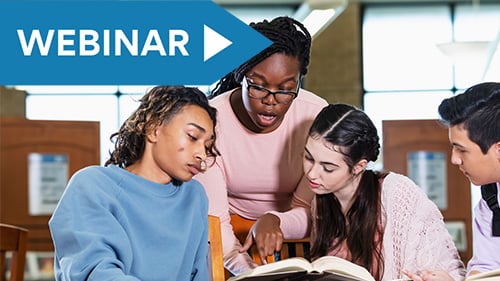
This webinar with Dr. Brandon Abdon, author of our AP Language and Composition and AP Literature and Composition AMSCO coursebooks, and guest ELA...

If you've ever worked with students who struggle with reading—or experienced that struggle yourself—you’ve likely seen it firsthand: the hesitation,...

I don’t know about you, but I hate grading reading comprehension questions. First of all, the answers usually could be “borrowed” from websites like...
.jpg)
While most early literacy development occurs in elementary school, teachers in middle and high schools continue shaping students' reading abilities,...

On the day after state testing, one of my sophomores burst into the room and announced: “Mr. G, I used rule of three on my essay.” It was a proud...
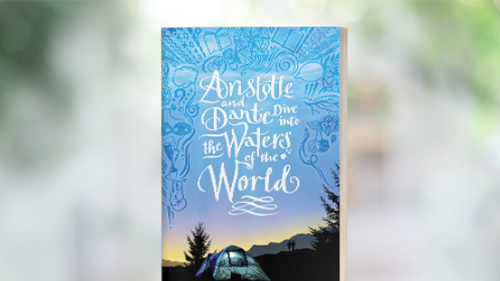
For most of the past year and half, I have spent most of my waking hours querying or obsessing over querying literary agents for my young adult novel

Every ELA teacher knows how to do this, right? Not exactly. This webinar invites all ELA teachers for an in-depth examination of the art of close...
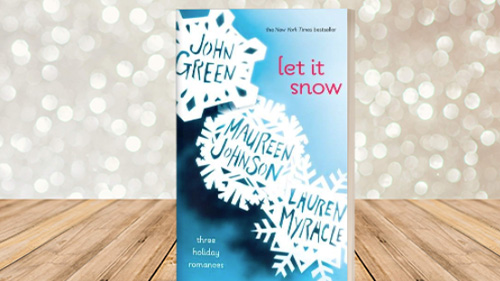
For the past two weeks on my morning runs, I’ve been listening to the podcast Christmas Wars: A Very Merry Rivalry on the battle for Christmas movie...

Ask a teenager how they feel about reading, and you’ll likely get an eye roll, a groan, or a halfhearted, “I don’t like books.”
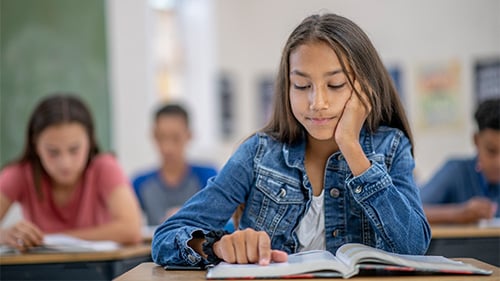
When the calendar gets crowded with winter concerts, makeup quizzes, assemblies, and general mid-year chaos, the idea of doing a full close-reading...

How do I get my kids in reading and writing shape, so they can move forward? Here are 6 questions I am asking myself as I attempt to help students...
